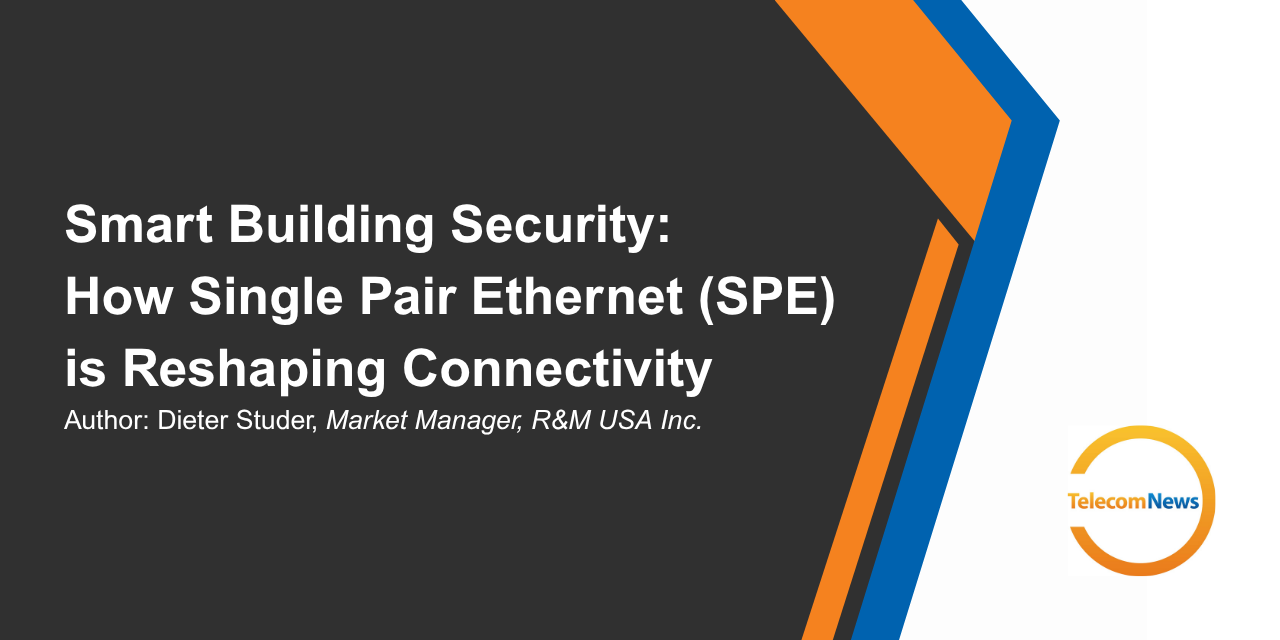Author: Dieter Studer, Market Manager, R&M USA Inc.
The smart building industry is on an extraordinary growth trajectory. In 2023, North America accounted for over 35% of the $108 billion global smart building market. Projections show this sector growing at nearly 26% annually through 2030, with integrated building management systems expected to surge from $12 billion in 2024 to over $40 billion by 2033. As the pace of development accelerates, so does the need for smarter, more secure infrastructure.
Smart buildings are no longer just about automation: they’re about convergence. Systems that once operated independently, HVAC, lighting, fire alarms, access control, and surveillance, are now being brought together over IP networks. This shift allows facility managers to monitor and control a building’s physical and digital systems from a single interface, streamlining operations, improving security responsiveness, and enabling powerful automation.
What’s driving this shift isn’t just convenience—it’s necessity. Buildings must now meet complex regulatory requirements around cybersecurity and occupant safety. U.S. regulations like HIPAA, NFPA, and FISMA demand not only physical security but also secure, auditable digital infrastructure. At the same time, organizations are under pressure to reduce both capital and operating costs. Converging systems over IP meets all of these needs, improving operational agility while laying a stronger security and compliance foundation.
SPE: enabling the next wave of smart building innovation
At the heart of this transformation is Single Pair Ethernet (SPE). Traditional Ethernet uses four pairs of wires to carry data and power, but SPE does this over just one twisted pair. This makes it dramatically easier and more cost-effective to deploy, especially in retrofits or space-constrained environments like ceiling plenums, wall cavities, or historical buildings with limited conduit capacity.
SPE also enables long-distance connectivity, up to 1000 meters in some use cases, far exceeding the 100-meter limit of standard Ethernet. This extended reach is critical for sprawling facilities, campuses, or large industrial complexes where sensors, cameras, and other devices may be located far from the nearest network switch. Fewer switches and less infrastructure mean lower energy use, easier installation, and less equipment to manage and maintain.
More importantly, SPE supports the convergence of Operational Technology (OT) and Information Technology (IT). It enables even the smallest building devices, like badge readers, motion sensors, or temperature monitors, to communicate directly over IP networks. This allows them to be integrated fully into the building management system and the cybersecurity framework, helping organizations enhance visibility, automate responses, and ensure that all data points, no matter how small, can be logged, analyzed, and secured.
SPE is also a perfect fit for digital ceiling strategies, which centralize networked infrastructure above drop ceilings to support LED lighting, sensors, security devices, and more. With its compact cabling and PoDL (Power over Data Line) capabilities, SPE simplifies cable management while extending network connectivity to zones previously difficult or expensive to reach.
Full flexibility
With backing from IEEE standards like 802.3cg and 802.3bu, SPE is gaining significant traction across the building automation, telecom, and industrial sectors. Industry leaders have invested in SPE development to ensure that it supports open, interoperable ecosystems—giving building owners and integrators flexibility in exactly how they design and scale their networks.
As buildings become smarter, their networks must evolve too. Single Pair Ethernet offers a powerful path forward: it reduces complexity, enables broader device connectivity, supports cybersecurity and regulatory compliance, and lowers total cost of ownership. In new construction and retrofit scenarios SPE is emerging as a foundational technology for the future of secure, intelligent buildings

